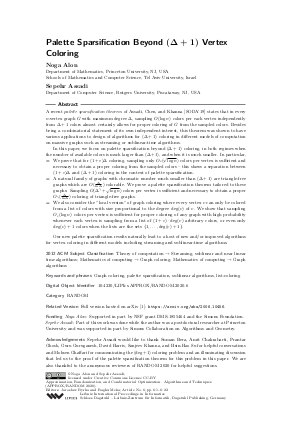LIPIcs.APPROX-RANDOM.2020.6.pdf
- Filesize: 0.66 MB
- 22 pages

 Creative Commons Attribution 3.0 Unported license
Creative Commons Attribution 3.0 Unported license
































Feedback for Dagstuhl Publishing